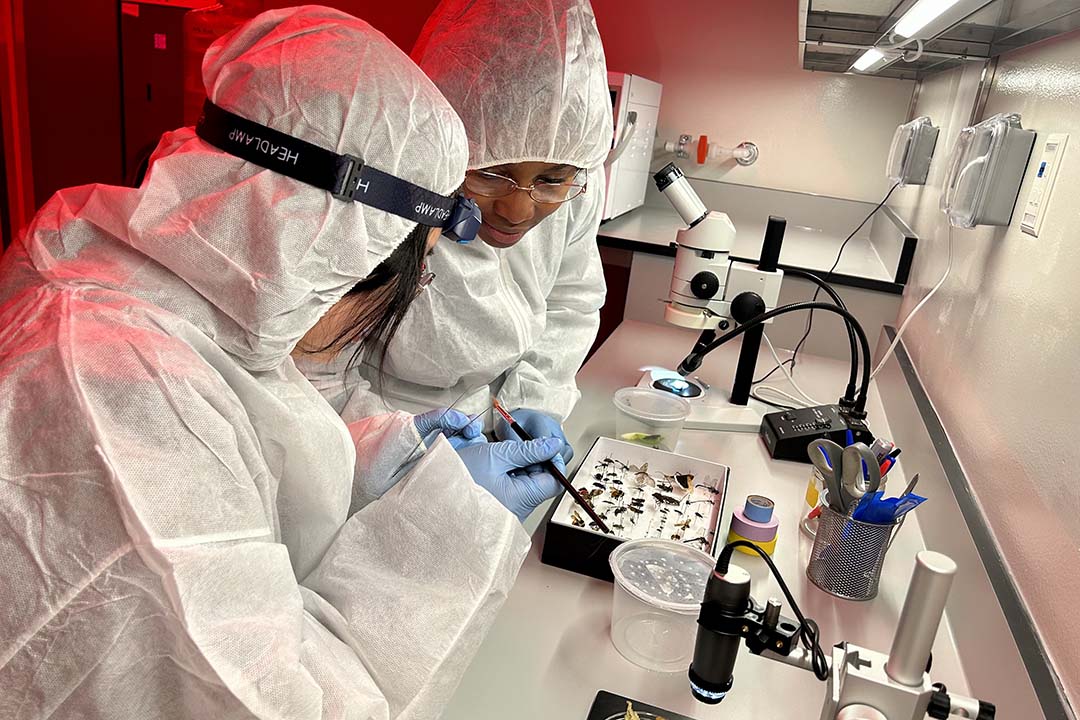
USask launches new University of Saskatchewan Insect Research Facility
SASKATOON – Today the University of Saskatchewan (USask) launched the University of Saskatchewan Insect Research Facility (USIRF), the first insect research facility with quarantine capabilities in a western Canadian university. Research conducted in the new facility will boost Canadian agriculture, protect the environment, reduce risk to food security, and provide fundamental insight into insect ecology.
“The USIRF places USask in a unique position among research institutions in Canada,” said Dr. Baljit Singh, USask vice-president of research. “This facility, and the research it will lend itself to, is another example of how USask is leading in the areas of food security and agriculture. We are tackling important questions that will ultimately have an impact and better our communities.”
Located in the Agriculture Building on the USask Saskatoon campus, the 500-square-foot insect quarantine facility is designed to meet Canadian Food Inspection Agency Plant Protection Containment Level-2A requirements, allowing researchers to study non-native insects and pathogens that pose a potential threat to western Canadian crops.
“Insects are an important part of agricultural ecosystems but some present huge economic and environmental risk,” said Dr. Sean Prager (PhD), USask entomologist and USIRF research lead. “The USIRF provides us a space to pre-emptively study how these pests would work in our environment and with Saskatchewan crops before they become an issue. This facility also allows us to involve students in this research, which means we can train students at the highest level of entomological research.”
The bio-secure insect-rearing and quarantine facility employs mechanical and operating safeguards to prevent accidental release and cross-contamination of harmful species. The USIRF contains climate-controlled chambers for sustaining insects and infested plants, and space for conducting experiments.
The USIRF supports collaborations between pest researchers and USask Crop Development Centre plant breeders. With the increased research capacity, USask researchers will be able to develop proactive methods of managing insects, resulting in new ways to predict pest outbreaks, decrease pesticide use, and develop new pest-resistant crop varieties.
“Our researchers will be able conduct the high-impact entomological research needed in Saskatchewan to develop more sustainable pest-management options and mitigate future risk,” said Dr. Angela Bedard-Haughn (PhD), dean of the College of Agriculture and Bioresources. “These discoveries will have economic benefit for producers and help protect our agricultural ecosystems.”
Funding for the USIRF was provided by $500,000 from the Western Grains Research Foundation (WGRF) as part of its $32 million Capacity Initiative, $285,000 from the Canada Foundation for Innovation, $70,000 from the Saskatchewan Canola Development Commission, $70,000 from Saskatchewan Pulse Growers, $70,000 from the Saskatchewan Wheat Development Commission, and $50,000 from USask.
Broadcast ready high-resolution (1080P, 29.97fps) b-roll press kit available: https://we.tl/t-GfDoLTkfqx
-30-
For media inquiries, contact:
Victoria Dinh
Media Relations Specialist
University of Saskatchewan
306-966-5487
victoria.dinh@usask.ca

